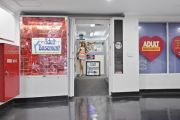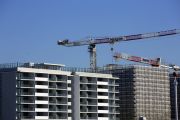
A Chadstone-sized problem in supply of new retail space
Retail property development across Australia is projected to drop by nearly three quarters over the next five years, despite growing demand from global and national brands for new stores in the nation’s CBDs.
As the pace of new shops being added to the market slows dramatically, even as the population grows, the competition for retail space can only intensify, according to Colliers.

The agency has forecast supply of new retail space to decline 72 per cent over the next five years compared to the amount delivered in the five years leading up to the COVID-19 pandemic.
As the race for space picks up – especially in the CBDs – average rental growth across the nation’s city centres has increased by an average of 4 per cent since 2022.
Major retail brands are taking up high-profile positions. The Mecca superstore opened its doors in Melbourne’s CBD in August – which Lord Mayor Nick Reece described as the city’s biggest retail opening in 100 years. The three-storey, 4000-square-metre store is in the middle of Bourke Street Mall and is three times the size of its flagship in Sydney.
Pop Mart, the company responsible for the viral collectible toy Labubus, opened one of its biggest stores in the country this month in Sydney’s World Square, which is also home to retailers including W Cosmetics, Calvin Klein, Hype DC and JB Hi-FI.
Foot traffic across Australia’s CBDs has rebounded to within 6 per cent of pre-pandemic levels. Brisbane, Perth and Adelaide have already exceeded their 2019 benchmarks, while Melbourne and Sydney continue to recover.

Michael Tuck, head of retail leasing and advisory at Colliers Australia, said that since COVID-19 higher costs had inhibited investment into the development of new retail properties.
“That’s really putting the pressure on supply to the market … so pipeline wise, it’s pretty limited,” he told The Australian Financial Review.
“Constrained supply and steady rental growth are underpinning landlord confidence, while rising demand and tightening vacancies are creating healthy competition for space.”
Yet, total retail sales performance in Australia is trading about 21 per cent above pre-pandemic trends.
Population growth is also outpacing development, leading to a significant decline in retail floor space per capita. To maintain the current supply ratio, an additional 2 million square metres of retail space – equivalent to nine Chadstone shopping centres – is required nationally by 2035, according to Colliers.
Meanwhile, retail space is becoming a major component in office buildings. Within its $12.8 billion wholesale fund, property giant Dexus has office assets with retail tenancies on its lower floors in major CBD precincts including 25 Martin Place in Sydney and 80 Collins Street in Melbourne.
Its Collins Street property is home to luxury fashion brands including Saint Laurent and Moncler.
Kirrily Lord, executive general manager of retail at Dexus, said the company had been able to tap into the luxury market through its CBD office holdings.
“[Luxury brands] want to be at the bottom of the premium, super prime office towers and that’s where we come into play, because we have those,” Lord told the Financial Review. “That’s where they want to be, at the base of those, matching the consumer base with their demand.”
Dexus also has a $13.3 billion real estate development pipeline.
In terms of the construction of new retail property, Lord said the company was always looking for the opportunity to grow its retail and mixed-use ancillary business exposure at its sites.
“Many of them have opportunities in train – some of them are very long-dated, some of them less long-dated,” she said. “It’s all down to when is the right time to build these things [and] what is the optimal use that we can pop onto those existing retail footprints.”











